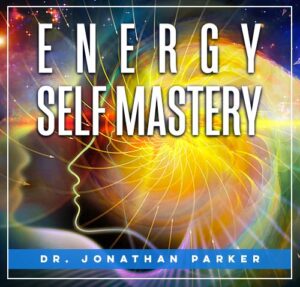How To Ground Your Energy During Meditation

Looking for more amazing products? Check out our online store and explore our collection here! Happy shopping!
Before diving in, please note: This post is for informational purposes only. If you’d like to know more about how we approach topics, feel free to check out our friendly Disclaimer Page.
Hey there, amazing readers! 
We’re committed to delivering quality posts, and your support (even just sticking around despite the ads) means everything to us. So, bear with us, and thanks for helping us keep the good vibes rolling. Now, on to the fun stuff!
TRANSLATE BUTTON AT THE END OF THE ARTICLE
A Quick Overview
Grounding your energy during meditation is like planting a tree deeply into the earth—steady, strong, and stable.
This practice connects us to the present moment and helps us release the chaotic energy that can sometimes swirl around in our busy lives.
Whether you’re a seasoned meditator or just starting your journey, knowing how to ground your energy can enhance your overall experience.
In this article, we’ll dive into various techniques and insights on how to effectively ground your energy during meditation.
Let’s get started!
Understanding Energy Grounding in Meditation Practice
Energy grounding is the process of connecting your personal energy to the Earth, creating a stable and balanced foundation for meditation.
Imagine it as a way to recharge your internal battery by drawing in the Earth’s energy.
This connection helps to release excess energy and anxiety that can cloud your mind during meditation.
When we meditate, our energy can scatter.
It can feel like trying to catch butterflies with your bare hands—frustrating!
By grounding ourselves, we create a safe space to explore our thoughts and emotions.
Grounding helps to anchor our intentions, allowing us to delve deeper into our meditation practice.
Understanding energy grounding goes beyond just feeling relaxed.
It’s about being aware of our thoughts, emotions, and physical sensations.
When we ground ourselves, we cultivate mindfulness, enabling us to observe our internal landscape without judgment.
Grounding is also about balance.
Think of it as adjusting the dial on a radio.
When the frequency is just right, everything becomes clearer and more harmonious.
Grounding helps us find that balance between our internal energy and the external world.
Overall, grounding during meditation fosters a sense of security.
It reminds us that we are part of something larger than ourselves.
This awareness can bring a profound sense of peace and clarity, which is precisely what we seek during meditation.
The Benefits of Grounding Your Energy Effectively
Grounding your energy offers a wealth of benefits that can enhance your meditation practice and daily life.
First and foremost, it helps reduce anxiety.
When I feel scattered or anxious, I find that grounding allows me to release those feelings, creating space for calmness.
Another benefit is improved focus.
It’s like clearing the fog off a window—you can see things more clearly.
Grounded energy helps sharpen your attention, allowing you to dive deeper into your meditation or tasks at hand.
Grounding also strengthens your connection to your body.
Master your Energy and Awaken Your Spirit – start your journey here.
Many of us live in our heads, constantly thinking and worrying.
By grounding ourselves, we become more attuned to our physical sensations, creating a harmonious connection between mind and body.
Additionally, grounding can help with emotional regulation.
When I ground myself, I often find it easier to navigate emotions without becoming overwhelmed.
It’s like having a sturdy raft to float on during a stormy sea.
Another perk is enhanced creativity.
When your energy is balanced and stable, you open the doors to inspiration.
This newfound creativity can flow effortlessly into your meditation practice and other areas of your life.
Finally, grounding can improve sleep quality.
When we release excess energy, we create a sense of peace that can lead to better rest.
I’ve noticed that nights following a good grounding session are often my most restful.
In summary, effectively grounding your energy acts like a safety net, catching us when we feel lost or overwhelmed.
It’s a powerful tool that brings clarity, creativity, and tranquility to our lives.
Preparing Your Space for a Grounding Meditation Session
Creating a conducive environment is key to successful grounding during meditation.
Start by selecting a quiet, comfortable space where you won’t be interrupted.
It could be a corner of your living room, a spot in your garden, or even a cozy nook in your bedroom.
Once you’ve chosen your space, consider decluttering it.
A messy environment can mirror a chaotic mind.
Clear away distractions to create a serene atmosphere.
A cluttered desk?
Toss it out!
A noisy room?
Find a quieter spot!
Next, think about the atmosphere.
Use soft lighting, perhaps a candle or dimmable lamps, to create a calming ambiance.
I love using fairy lights to bring a cozy feel to my meditation corner.
It’s like wrapping myself in a warm blanket of tranquility.
Incorporate elements that resonate with you.
You might want to add a comfortable cushion or mat to sit on.
If you enjoy scents, consider lighting incense or using essential oils.
Lavender and sandalwood are particularly grounding.
Add personal touches that inspire you, such as plants or crystals.
Plants can enhance the energy of your space, while crystals like hematite or smoky quartz are believed to help with grounding.
Finally, consider playing soft, instrumental music or nature sounds in the background.
This can enhance your meditation experience and provide a soothing backdrop for grounding.
By preparing your space thoughtfully, you set the stage for a successful grounding meditation session.
It’s like getting the perfect ingredients together before cooking a meal; it makes all the difference!
Choosing the Right Time and Place to Meditate
Timing plays a significant role in how effectively you can ground your energy.
Establishing a consistent schedule helps train your mind and body to switch into a meditative state more easily.
Many people find early mornings or quiet evenings to be ideal times.
The world feels still, allowing you to connect deeply with yourself.
Consider the environment around you as well.
Look for moments when your surroundings are calm.
If you live in a bustling neighborhood, early mornings might be your best bet.
On the flip side, if you have a serene garden, why not meditate outdoors when the weather is nice?
Choosing a location is also about finding what resonates with you.
Some people thrive in peaceful indoor spaces like a cozy study, while others feel more grounded in nature.
Personally, I love meditating by the lake.
The sound of water calms my mind and connects me to the Earth.
Master your Energy and Awaken Your Spirit – start your journey here.
The key is to be flexible.
Life can be unpredictable, so don’t stress if your routine changes.
Adaptability is essential.
Whether it’s a different time of day or a new location, be open to exploring what works best for you.
Lastly, pay attention to your internal clock.
Some days may require more grounding than others.
Listen to your body and choose a time that feels right.
Trust your intuition—it often knows what you need.
Breathing Techniques to Anchor Your Energy
Breath is one of the simplest and most effective tools for grounding energy during meditation.
Focusing on your breath allows you to connect with the present moment, creating a sense of calm.
One technique I often use is the 4-7-8 breathing method.
Here’s how it goes:
Inhale through your nose for a count of four.
Hold your breath for a count of seven.
Exhale slowly through your mouth for a count of eight.
This technique not only calms your mind but also helps you feel more rooted in your body.
Another method is diaphragmatic breathing, also known as belly breathing.
Place your hands on your abdomen and feel it rise and fall with each breath.
This technique encourages deeper breaths, promoting relaxation and grounding.
You can also try box breathing—a favorite among many.
Inhale for a count of four, hold for four, exhale for four, and hold again for four.
Repeat this cycle several times.
The rhythmic nature of box breathing creates a sense of stability.
Don’t underestimate the power of simple deep breaths.
Take a few moments to inhale deeply through your nose and exhale fully through your mouth.
Picture your breath as a wave, flowing in and out, washing away tension and stress.
Finally, embrace the connection between your breath and the Earth.
With each inhale, imagine drawing in the Earth’s energy, and with each exhale, release any tension or anxiety.
This visualization reinforces the grounding effect of your breath.
By incorporating these breathing techniques into your meditation practice, you can effectively anchor your energy, creating a calming foundation for deeper exploration.
Visualization Practices for Grounding Your Energy
Visualization is a powerful tool for grounding energy during meditation.
It allows us to create mental images that foster peace and stability.
One popular technique is the “rooting” visualization.
Picture yourself as a tree, with roots extending deep into the ground.
As you breathe in, visualize nurturing energy from the Earth flowing up through your roots, filling your body.
With each exhale, imagine releasing any stress or negativity back into the Earth, where it can be transformed.
Another effective visualization is to imagine a warm, golden light enveloping you.
Picture this light as a protective shield that keeps you grounded and connected to the Earth.
This visualization can help create a sense of safety during your meditation practice.
You can also visualize a cord connecting you to the Earth’s core.
Picture this cord extending from the base of your spine down into the ground, anchoring you firmly.
As you meditate, focus on this connection, feeling supported and secure.
Another favorite of mine is to imagine a beautiful landscape—a serene beach, a calm forest, or a majestic mountain.
Picture yourself standing in that space, absorbing the energy and tranquility around you.
This mental escape can enhance your grounding experience.
Finally, feel free to create your unique visualization.
It could be a color, an object, or even a favorite memory that brings you peace.
The key is to focus on this image, allowing it to anchor your energy and ground you during meditation.
Using Nature to Enhance Your Grounding Experience
Nature is one of the most potent allies in grounding our energy.
I often step outside for a few moments before meditating.
The fresh air and natural surroundings help clear my mind and prepare me for a deeper experience.
One effective technique is to spend time barefoot on the ground, known as “earthing.” Feel the grass, soil, or sand beneath your feet.
This direct contact with the Earth allows you to absorb its energy, creating a stronger connection.
You can also use natural elements during your meditation.
Bring in stones, leaves, or flowers from outside.
Holding these objects while meditating can evoke feelings of connection and grounding.
If you can’t meditate outside, bring nature indoors.
A potted plant or a bowl of natural stones can enhance your space.
Even the sound of rustling leaves or flowing water playing in the background can transport your mind to a peaceful natural setting.
Embrace the changing seasons as part of your grounding practice.
Each season offers unique energies and symbolism.
In spring, focus on renewal; in autumn, reflect on release.
Connecting with seasonal changes can deepen your grounding experience.
Finally, don’t forget to observe nature.
Take a moment to watch the clouds, listen to birds, or feel the wind on your skin.
Mindful observation connects you to the present moment, grounding your energy even further.
Nature reminds us of our place in the world.
By harnessing its power, we can create a profound grounding experience during meditation.
Incorporating Crystals for Energy Grounding
Crystals have been used for centuries in various spiritual practices, and they can be excellent allies for grounding energy during meditation.
Each crystal has unique properties that can enhance your meditation experience.
One of the most popular grounding crystals is hematite.
Its heavy, metallic properties are believed to provide a strong grounding effect.
Holding it during meditation can help you feel more connected to the Earth and centered in your body.
Another favorite is smoky quartz.
This crystal is thought to absorb negative energy and promote emotional balance.
I love keeping a piece nearby while I meditate; it helps me release any lingering tension.
Black tourmaline is another powerful grounding crystal.
It acts as a protective shield against negativity and is often used to cleanse and ground energy.
Placing it at the base of your spine during meditation can enhance your connection to the Earth.
Consider using a crystal grid as well.
Arrange several grounding crystals in a pattern that resonates with you.
Sit within or near the grid during meditation, allowing the collective energy of the crystals to enhance your grounding experience.
If you’re unsure which crystals to use, trust your intuition.
You might be drawn to a specific crystal without knowing why.
That inner pull often guides us to what we need.
Finally, remember to cleanse your crystals regularly.
They can absorb energy, so keeping them charged and clear helps maintain their grounding properties.
A quick rinse under running water or placing them in sunlight can do the trick.
Incorporating crystals into your meditation practice can add another layer of grounding energy, enhancing your overall experience.
Grounding Exercises to Try Before Meditation
Before diving into meditation, try incorporating grounding exercises to settle your energy.
These exercises help release tension and prepare your mind and body for a deeper experience.
One simple exercise is the “five senses” technique.
Take a moment to engage each of your senses:
Sight: Look around you.
Focus on the colors and shapes in your environment.
Sound: Listen to the sounds around you.
Identify different noises, from distant chatter to the rustle of leaves.
Touch: Feel the ground beneath you or rub your hands together.
Notice the sensations in your body.
Taste: Pop a piece of gum or sip water.
Pay attention to the flavors and textures.
Smell: Take a deep breath and notice any scents in the air.
This exercise helps anchor you in the present moment, promoting a sense of calm.
Another effective grounding exercise is the “body scan.” Sit or lie down comfortably, and slowly bring your awareness to each part of your body, starting from your toes and moving up to your head.
As you focus on each area, consciously release any tension you feel.
You can also try the “tree pose” from yoga.
Stand on one leg, rooting your foot into the ground while lifting the other leg and placing it on your inner thigh or calf.
This pose encourages balance and stability, allowing you to feel more centered.
Finally, take a few moments to practice gratitude before meditating.
Reflect on what you appreciate in your life right now.
Gratitude shifts your focus, helping you connect with positive energy and grounding your spirit.
These grounding exercises can transform your meditation practice, making it more accessible and enriching.
Listening to Grounding Music or Sounds
Music has an incredible power to influence our energy and emotions.
Listening to grounding music or sounds can enhance your meditation experience significantly.
Consider incorporating nature sounds, like rain falling, waves crashing, or wind rustling leaves.
These sounds evoke a sense of peace and connection to the Earth, helping you settle into a meditative state.
You can also explore instrumental music designed for meditation.
Many artists create soothing tracks specifically for grounding.
Look for music with slow tempos and soft melodies.
I often find that ambient music creates a calming atmosphere that enhances my meditation.
Another option is binaural beats.
These sound frequencies are designed to promote relaxation and focus by using different tones in each ear.
Experimenting with binaural beats can create a unique grounding experience, helping you tap into a deeper state of meditation.
If you prefer guided meditations, many options focus specifically on grounding.
These recordings often include soothing music alongside spoken instructions to help you visualize and connect with your energy.
Creating your playlist can also be a fun approach.
Include tracks that resonate with you and make you feel calm and centered.
Having your personalized grounding soundtrack can enhance your meditation journey.
Lastly, don’t hesitate to explore silence.
Sometimes, the absence of sound can be the most grounding experience of all.
Embrace the stillness and listen to your breath, allowing yourself to connect with your inner self.
Integrating grounding music or sounds into your meditation practice can enrich your experience and help you feel more connected and present.
Closing Your Meditation and Releasing Energy
As you conclude your meditation, it’s essential to take time to release any energy you’ve cultivated during the session.
This process helps you transition back into your daily life while maintaining a sense of grounding.
Begin by taking a few deep breaths.
Inhale deeply through your nose and exhale slowly through your mouth.
Visualize any excess energy flowing out of your body with each exhale.
It’s like letting go of a balloon—watch it float away!
Take a moment to express gratitude for your meditation experience.
Thank yourself for dedicating time to your practice and for the insights gained.
Acknowledging this effort fosters a positive connection to your meditation practice.
You might also want to visualize a grounding cord connecting you to the Earth as you close.
Picture this cord absorbing any residual energy and anchoring you firmly in the present moment.
With each breath, feel yourself becoming more connected to the ground beneath you.
If you’ve used crystals during your meditation, take a moment to thank them for their energy.
Gently place them back in their spot or cleanse them as needed to prepare for future use.
Finally, slowly open your eyes and take a moment to reacquaint yourself with your surroundings.
Allow yourself to gently wiggle your fingers and toes, bringing your awareness back to your physical body.
This closing ritual helps maintain the grounding energy cultivated during meditation, allowing you to carry that sense of peace into your daily activities.
Maintaining Grounded Energy After Your Session
Grounding doesn’t have to end when your meditation session does.
There are simple practices you can incorporate into your daily life to maintain that sense of stability and calm.
Start with mindful movement.
Engage in activities like yoga, tai chi, or even a leisurely stroll in nature.
These practices help keep your energy flowing while maintaining a connection to the Earth.
Incorporate grounding foods into your diet, such as root vegetables, nuts, and seeds.
Eating foods that grow close to the ground can help keep your energy grounded and stable.
Another effective strategy is to practice mindfulness throughout the day.
Take short moments to pause, breathe, and check in with yourself.
Whether you’re sipping coffee or waiting in line, find opportunities to connect with the present moment.
Consider journaling.
Writing down your thoughts and feelings helps clarify your emotions and provides an outlet for any energy that may feel stuck.
Reflecting on your meditation experience can also reinforce the insights gained.
Finally, embrace regular self-care practices.
Whether you enjoy a warm bath, a good book, or some quality time with loved ones, nurturing yourself helps maintain a sense of balance and grounding.
Remember that grounding is an ongoing process.
By incorporating these habits into your life, you can create a lasting sense of stability and peace, enhancing your meditation practice and daily experiences.
Conclusion
Grounding your energy during meditation is a transformative practice that can enrich your life.
By understanding the principles of energy grounding and incorporating various techniques, you create a safe space for exploration and self-discovery.
From preparing your space to using nature and crystals, each element contributes to a more profound and fulfilling meditation experience.
Remember to listen to your body, trust your intuition, and enjoy the journey.
As with all practices, consistency is vital.
Embrace your unique approach to grounding, and over time, you’ll find it becomes a natural part of your meditation routine.
So, let’s take a moment to breathe deeply, connect with the Earth, and enjoy the peace that comes from being grounded.
Happy meditating!

The Enlightenment Journey is a remarkable collection of writings authored by a distinguished group of experts in the fields of spirituality, new age, and esoteric knowledge.
This anthology features a diverse assembly of well-experienced authors who bring their profound insights and credible perspectives to the forefront.
Each contributor possesses a wealth of knowledge and wisdom, making them authorities in their respective domains.
Together, they offer readers a transformative journey into the realms of spiritual growth, self-discovery, and esoteric enlightenment.
The Enlightenment Journey is a testament to the collective expertise of these luminaries, providing readers with a rich tapestry of ideas and information to illuminate their spiritual path.
Our Diverse Expertise
While our primary focus is on spirituality and esotericism, we are equally passionate about exploring a wide range of other topics and niches 

To ensure we provide the most accurate and valuable insights, we collaborate with trusted experts in their respective domains 
Our blog originally focused on spirituality and metaphysics, but we’ve since expanded to cover a wide range of niches. Don’t worry—we continue to publish a lot of articles on spirituality! Frequently visit our blog to explore our diverse content and stay tuned for more insightful reads.
Hey there, amazing reader! 
Check out our store here and take a peek at some of our featured products below! Thanks for being awesome!














